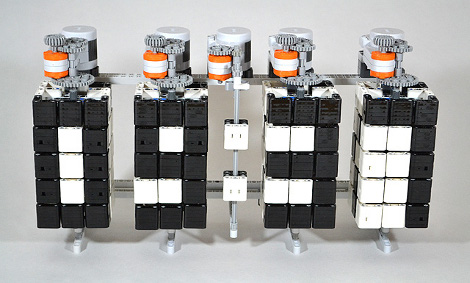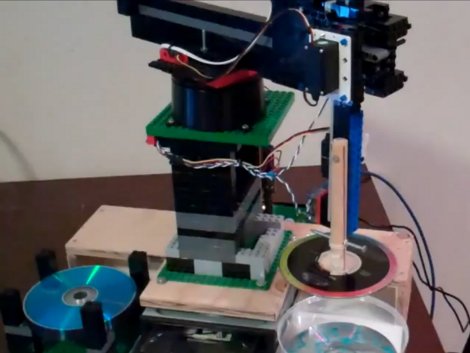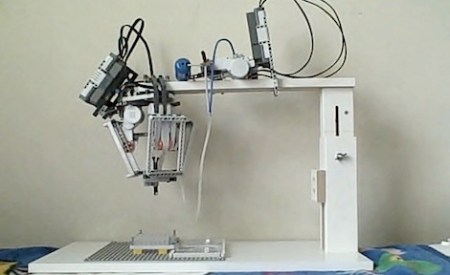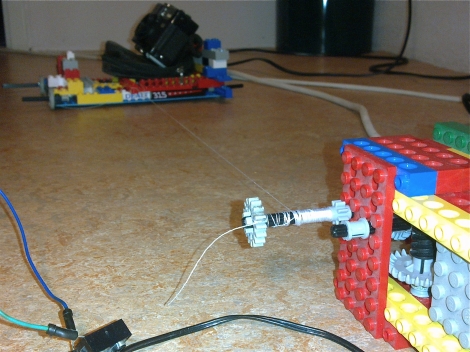
[Krash] had a lot of fun hacking up his Spy Gear TRAKR; we’re just lucky he was able to move a suspicious Shrek doll before it detonated.
The now discontinued Spy Gear TRAKR serves as the basis for [Krash]’s build. This tiny remote-controlled toy transmits video back to its remote and makes us very jealous of the awesome toys our nephew has. Thankfully, the engineers behind the TRAKR made it extremely hackable, as proved by Hack A Day’s very own [Phil Burgess].
[Krash] began his build by putting a few male headers in the GPIO pins on the TRAKR’s board. After that, the TRAKR SDK was downloaded. He used a few Snap Circuits to verify his TRAKR software was working, then set off to build a Lego gripper arm. The arm is powered through an H-bridge IC [Krash] found alongside the rest of his Snap Circuits stuff.
Not a bad build for what amounts to a pile of toys. Check out [Krash]’s video of his bomb disposal bot after the break.
















